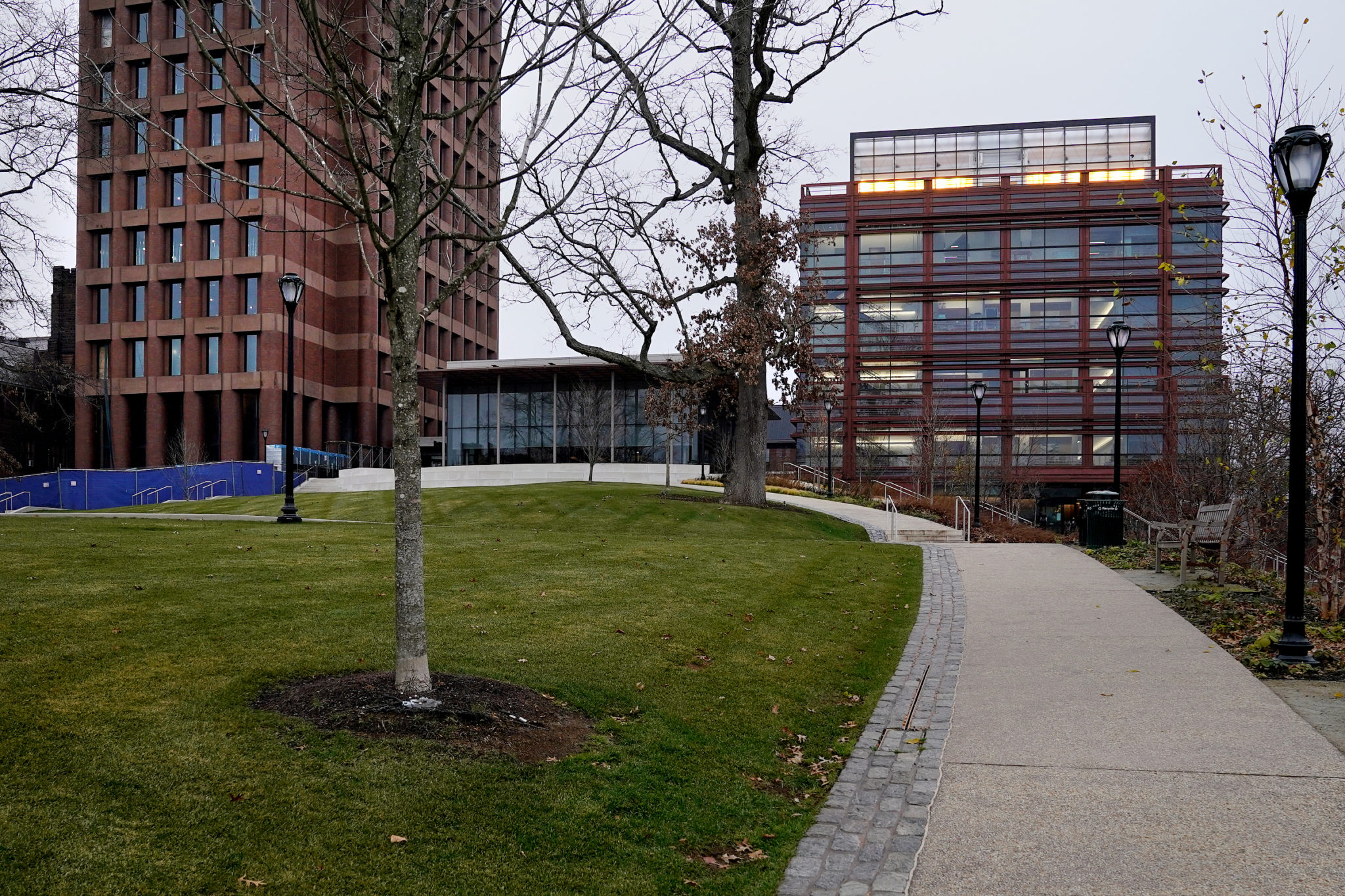Yale’s labs aim to address chronic energy inefficiency
Yale’s labs are some of the most energy-intensive buildings on campus. Sustainability experts agreed that infrastructure and behavioral changes are needed to make labs energy efficient.

Tim Tai, Staff Photographer
Old science labs continue to be one of the biggest energy guzzlers on campus, and the University is attempting to improve lab efficiency in its new buildings.
Labs are typically the largest energy consumers per square footage on college campuses, with high levels of ventilation, specialized equipment and specific temperature and humidity controls all requiring significant levels of energy use. Of the 65 most energy intensive buildings on Yale’s campus, 45 of them are labs, clinics or buildings used for critical research, with the older labs being particularly less energy-efficient than the newer ones. Kline Biology Tower, opened in 1966, is the third-most energy intensive building on campus, and it has used 21,131 million british thermal units in the 2022 fiscal year to date. But the recently built Yale Science Building is expected to use less than half of the energy per square foot used by the Anlyan Center, another science building constructed more than 20 years ago.
“Each lab Yale builds is more efficient, and the industry has made significant progress in laboratory energy efficiency,” Virginia Chapman, director of the Office of Sustainability, wrote in an email to the News.
The University’s energy consumption could be significantly reduced by improving the infrastructure of existing labs, experts said. According physics professor Daniel Prober. Improving a building’s air ventilation would make a particularly significant impact on energy usage. Prober pointed to Kroon as an example: although not a laboratory building, Kroon uses a sixth of the energy that a typical older building with the same number of classrooms and offices would use.
Heating and cooling are also areas with potential for improved efficiency, according to economics professor Kenneth Gillingham. Equipment like fume hoods, for example, can be made more efficient by tailoring to the lab’s needs.
Unused lab space is another cause of wasted energy.
“There may be circumstances where a lab is being kept as a “clean room” [containment areas that require enhanced air filtration and therefore consume high levels of energy] when that is not necessary for the research being performed,” Gillingham wrote to the News. “It may also be possible to cordon off lab space that is temporarily not being used, and thus not heat and cool this space,” Gillingham added.
Fortunately, the University can make its labs more energy efficient without construction. Namely, closing fume hoods when not in use, allowing for more ventilation in the lab and turning off equipment when not in use are all ways that researchers can save energy, according to Chapman.
It may be simplest to make labs more efficient by looking at how individual labs run and identifying best practices for each lab since research methods and type of energy consumption will vary from lab to lab, according to Jaye Wilson GRD ’27, a first year doctoral student at the Yale School of the Environment.
Yale labs can choose to undergo a voluntary Green certification program that scores their efficiency, where labs are scored based on the laboratory practices they adopt. Labs achieving a high level of certification are given signage for their laboratory to show that they have achieved certification and are invited to an annual celebration.
Little incentive exists, however, for lab overseers to reduce waste since they are not paying for the energy they use, Gillingham said.
Yale’s energy consumption totals approximately 4 million mmbtu per year, which is equivalent to approximately 20,000 Connecticut households.
Correction, April 29: A previous version of this article names the Yale Science Building instead of the School of Management when referring design and energy. The article has been updated to reflect this.







